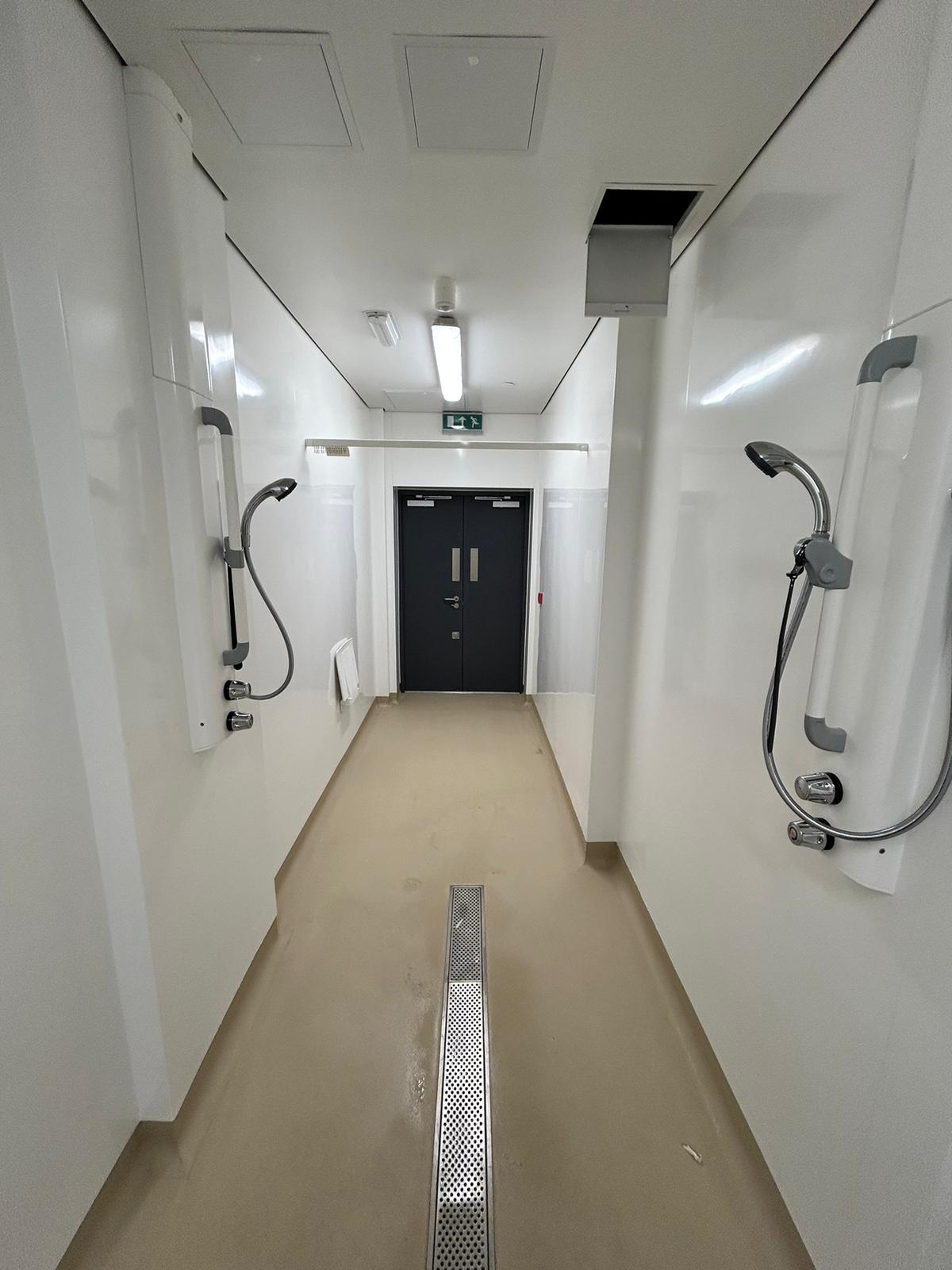Below you can find a summary of what people told us before we built our new A&E at Huddersfield Royal Infirmary, and how we incorporated the feedback into our designs. This feedback has also been used for the design work on the new A&E Department at Calderdale Royal Hospital.
Arrival
“Provide sufficient ambulance bays”
“Patients arriving by ambulance should be admitted to the ED under a canopy that provides protection from the elements.”
We looked at the number of ambulances arriving at our A&E to make sure that there are enough bays. This means ambulances do not have to queue, and that it is quicker for ambulances to drop off and turn around.
There is an external canopy between the ambulance drop off area and the A&E building to provide protection from the weather.
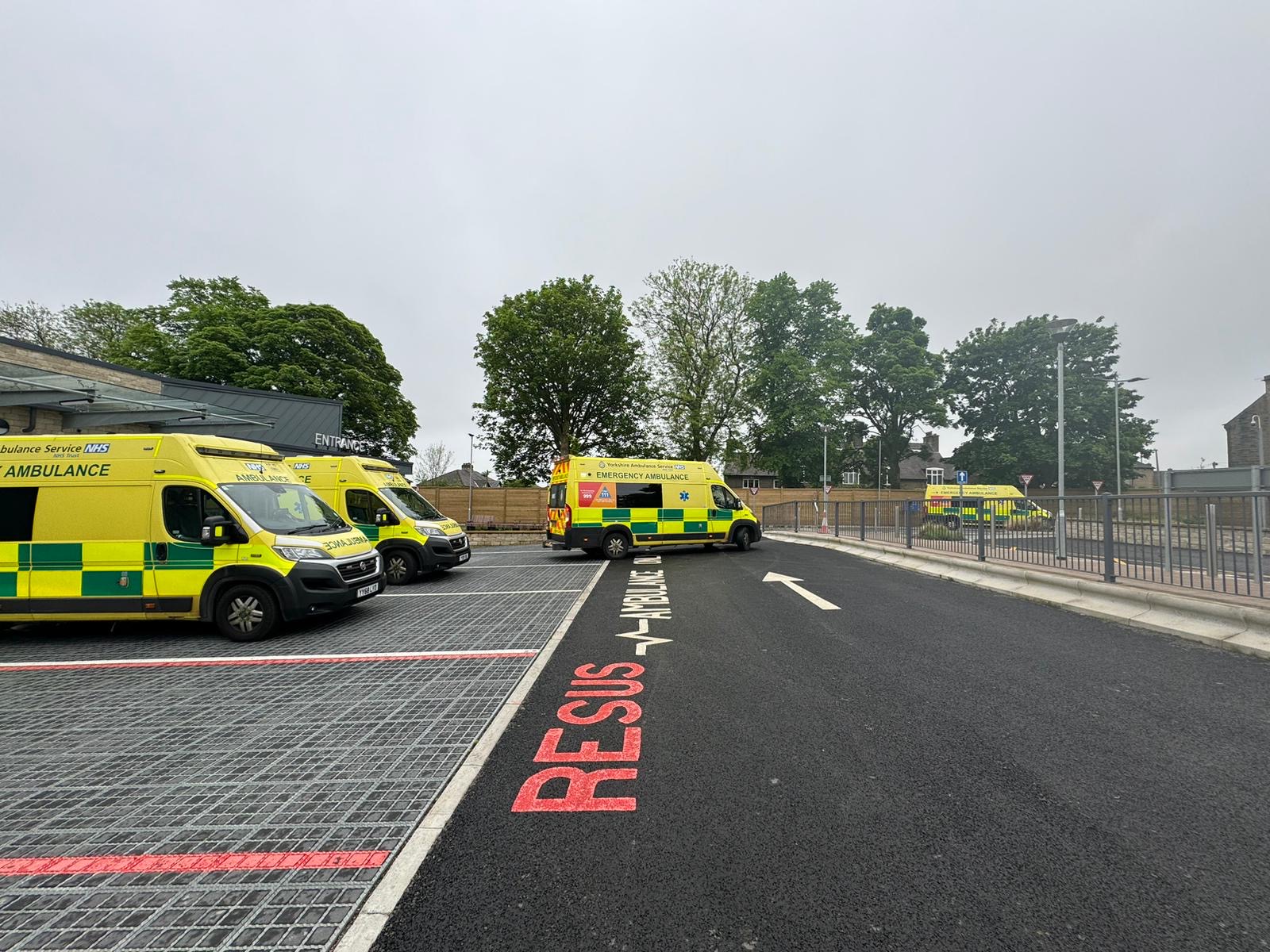
“Generous Reception facilities, incorporating security screens that will facilitate patient confidentiality and full visibility of the waiting area.”
The design of the reception area is arranged so that all patients can register their arrival and give information to the reception team in a confidential manner.
The design also allows the reception team to see the full entrance and waiting area.
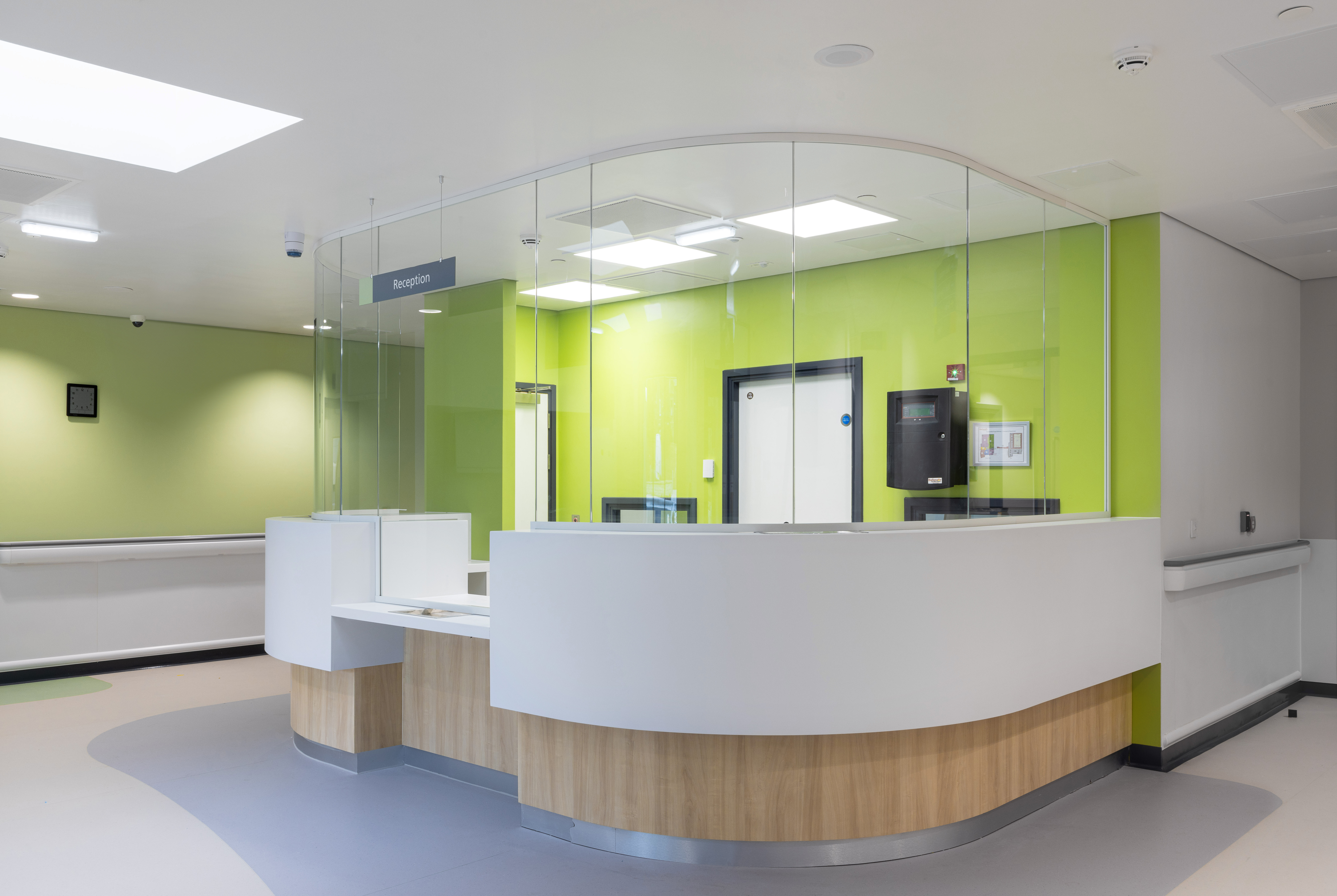
“The design should be arranged so that all adult patients (even if arriving my ambulance) are conveniently brought to a single point where an initial assessment can be carried out to filter patients into Primary Care, Assessment Unit or Emergency Department.”
“Triage and assessment areas must be adequately sized to ensure that patients are assigned to an appropriate pathway within their first hour of arrival.”
The location of the assessment space is in between the ambulance and walk in entrances which gives all our patients equitable access to the triage area. This is also large enough to accommodate our patients.
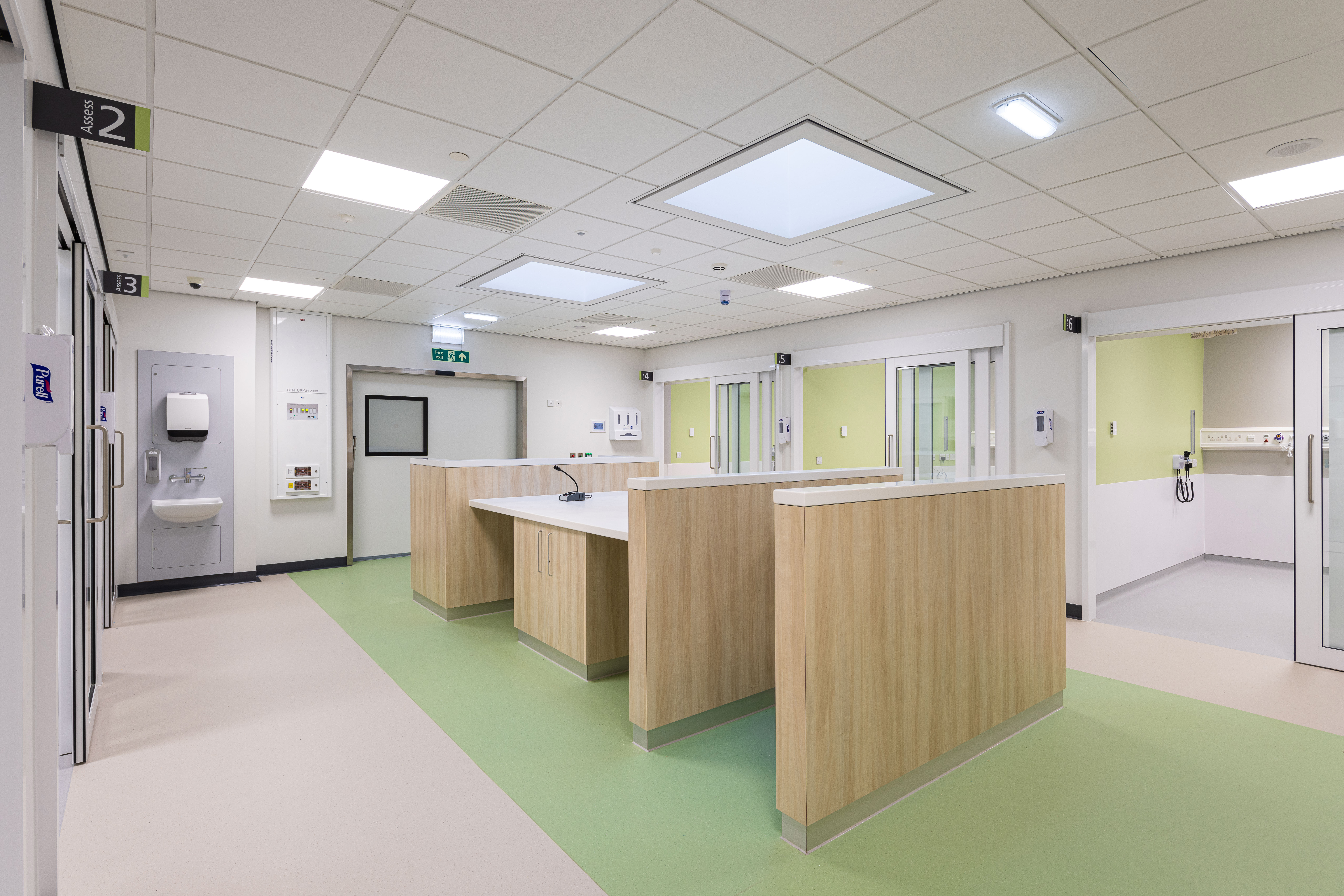
Paediatrics
“All paediatric patients should have access to separate facilities to adult patients.”
Once a paediatric patient has registered with the main department reception, they are directed to the dedicated paediatric Emergency department which is a completely separate area to the adults department.
The environment has been designed to be welcoming and comforting for our paediatric patients. Corridors are bright and colourful. There is a well-equipped and generous sized waiting area with equipment and toys for children and young people to use while they wait to be seen.
There are dedicated well equipped treatment rooms specifically for our paediatric patients which have appropriate themed décor for the department too.
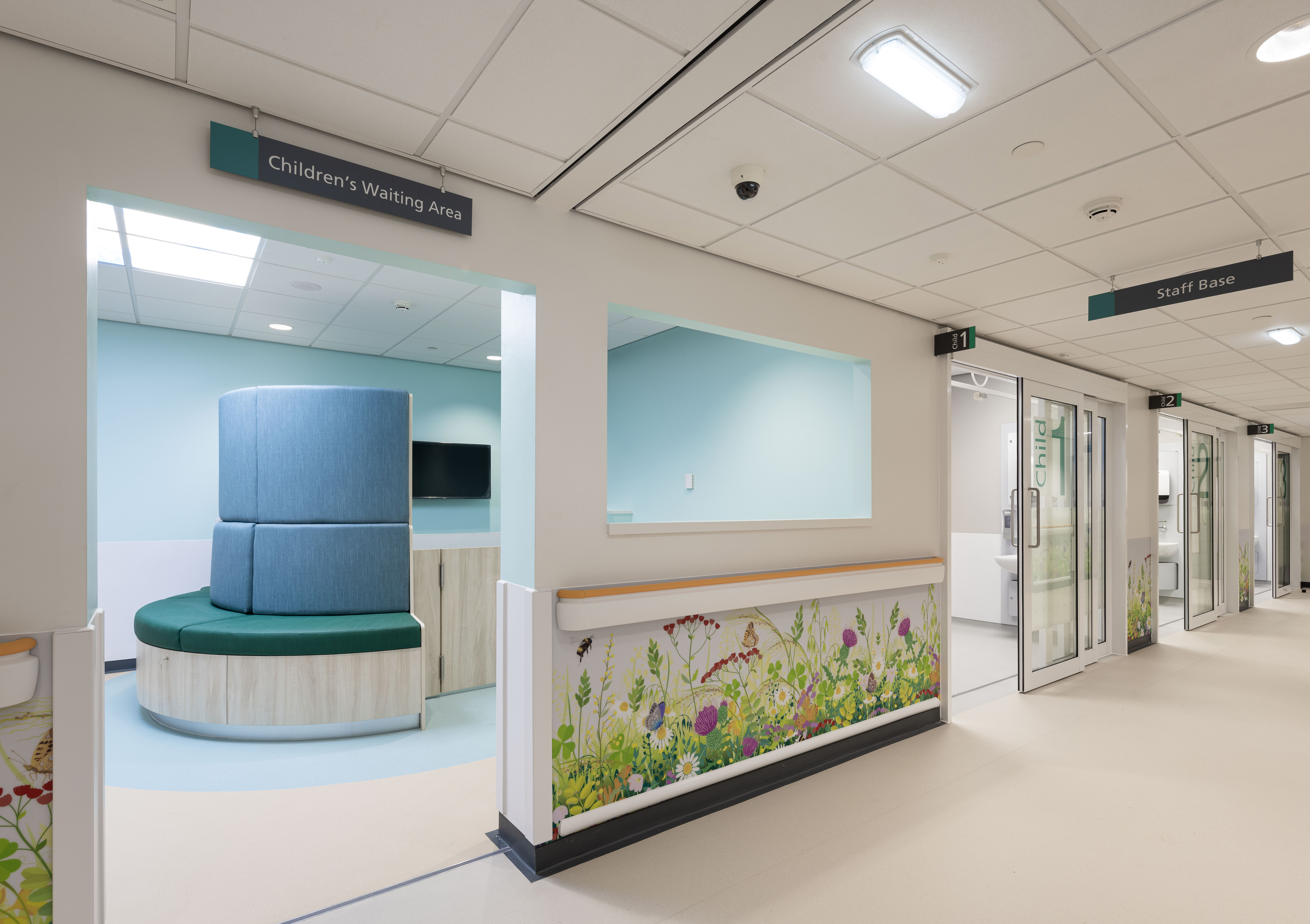
Assessment and treatment
“The Emergency Department are keen to move from couch-centric to chair-centric patient examination. This model provides better use of space. It is also the preferred arrangement for respiratory patients and for elderly patients who can decondition very quickly when laid down.”
There are a number of chair-centric cubicles which makes sure that there is enough space for a chair and clinical equipment with curtains to facilitate privacy as required.
Each cubicle has provision for medical gases and standardised wall mounted clinical equipment.
The area is light and airy making full use of natural light with additional ceiling illustrations.
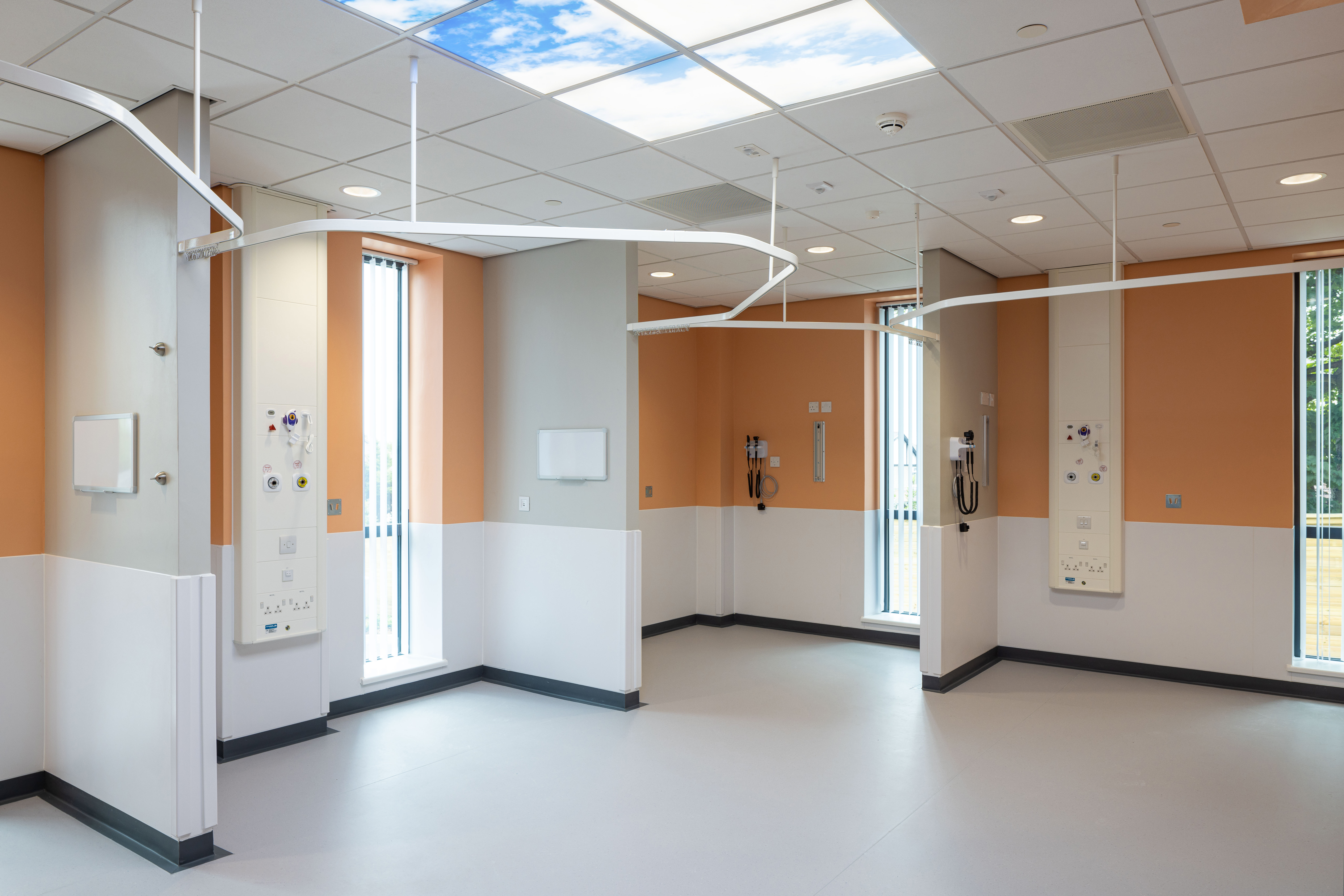
“The design should seek to avoid pockets of separate activity to enable sub department boundaries to be flexed in response to demand.”
“Cubicles of each type should be a consistent size regardless of the initial planned function.”
Cubicles in each of the three areas are a standardised layout, with facilities and clinical equipment to promote efficiency, functionality and can be flexed in line with demand.
Each self-contained cubicle is fully equipment with a computer, handbasin, wall mounted clinical equipment to make the most out of the space, and medical gases.
In Majors, patient monitoring equipment can provide continuous recording of patient's vital observations.
Glass fronted cubicles ensure ongoing visibility and facilitates isolation requirements as required. Additional privacy is maintained with curtains.
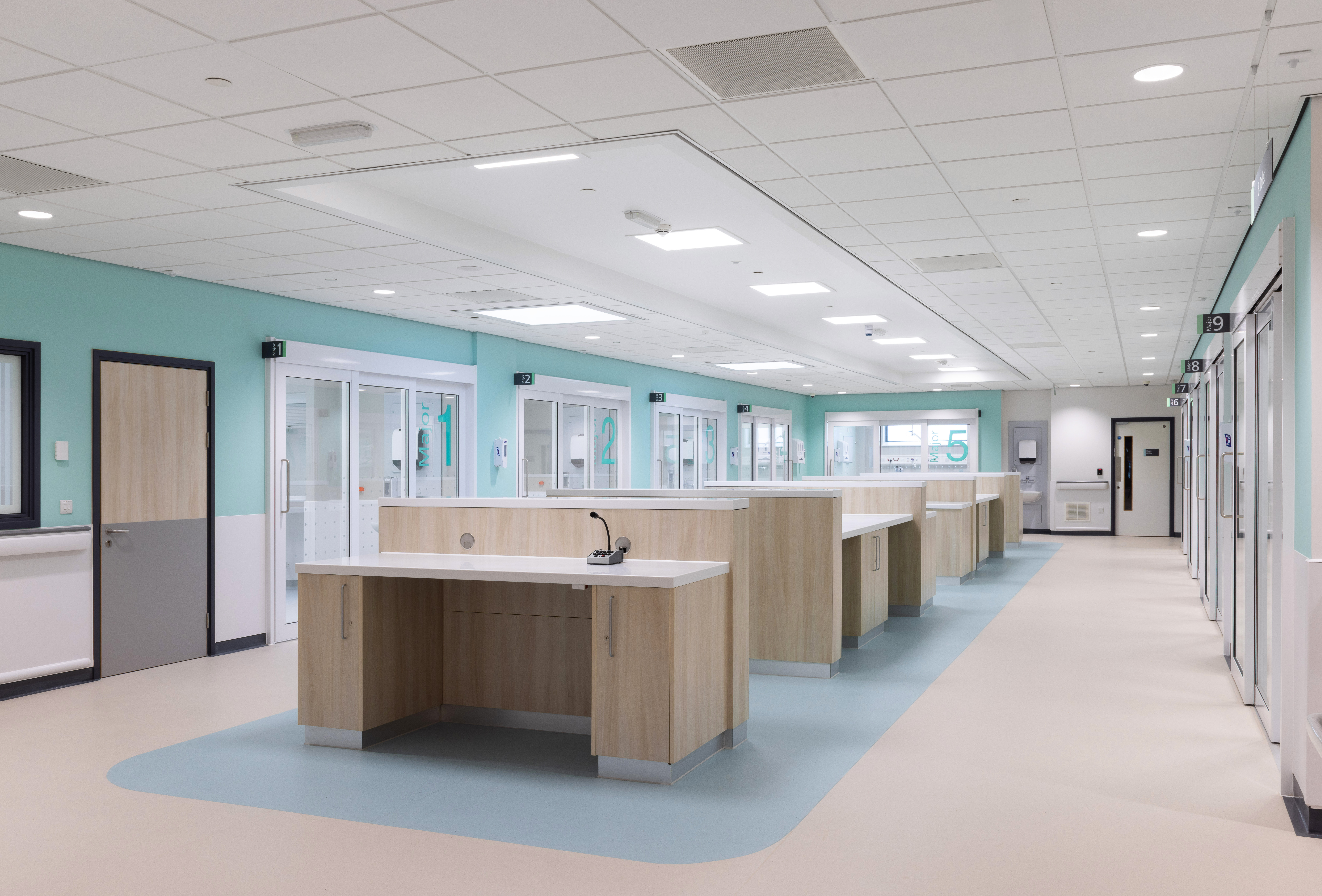
Decontamination
“The Emergency Department will require a permanent Decontamination Unit rather than a tent type facility”
The A&E has a permanent Decontamination Unit to utilise as the receiving centre for major trauma and chemical incidents.
An external entrance to the shower provision and gowning lobby is incorporated into the new design.
In the event of a chemical incident a water container from the decontamination showers collects water for safe storage prior to removal and specialist disposal.
